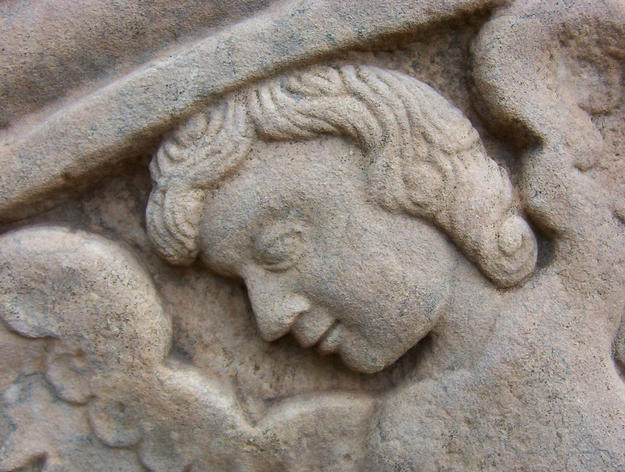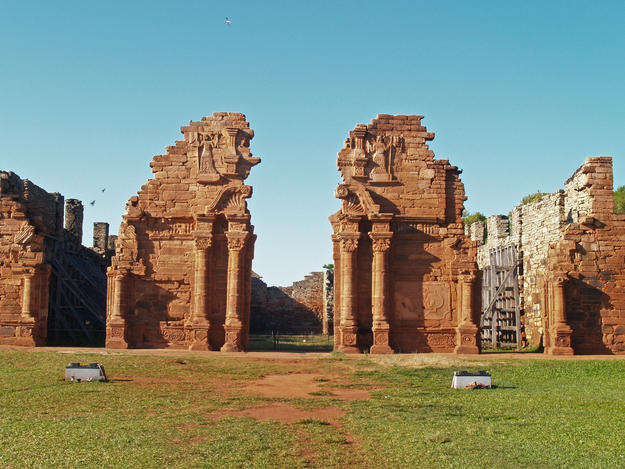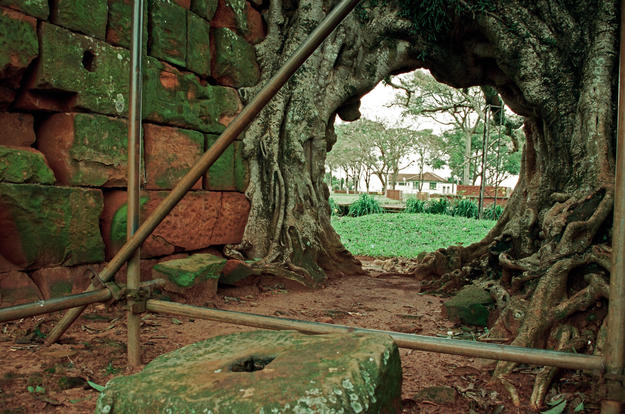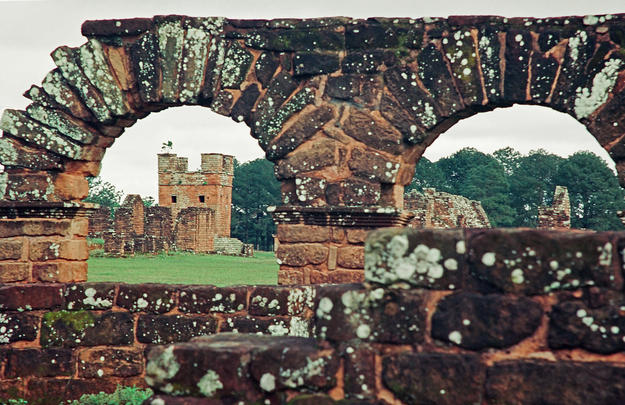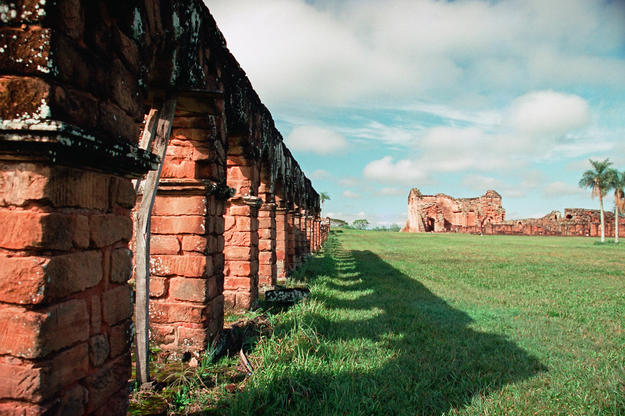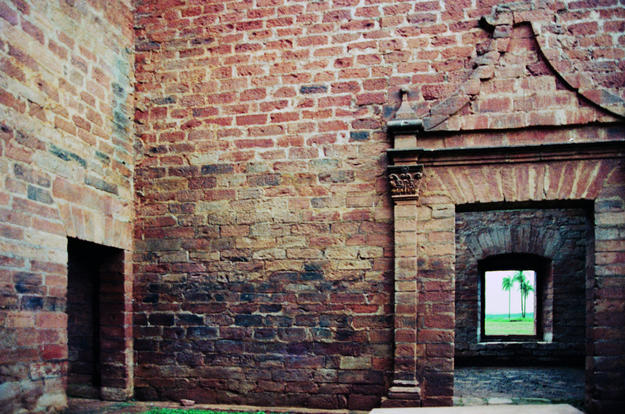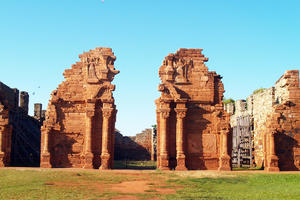Jesuit Guaraní Missions
Beginning in the seventeenth century, the Jesuit Order founded a series of 30 missions in the lush rainforest stretching throughout modern Argentina, Brazil, and Paraguay. The missions combine Spanish baroque architecture, indigenous materials and building technology, and the religious symbolism of both local traditions and European Catholic liturgy. During their brief time in the area, the Jesuits brought complicated changes to the lives of the native populations by transforming the landscape and harnessing natural resources. Following the Guaranítica War of 1750 and the later expulsion of the Jesuit order in 1767, the sanctuaries were hastily abandoned. However, the Jesuits left their mark even after they were expelled. When new laws encouraged European immigration to the city of Misiones, Argentina, toward the close of the nineteenth century, native traditions and European influences once again altered local cultural patterns. The missions of San Ignacio Miní in Argentina, São Nicolau in Brazil, and La Santísima Trinidad de Paraná in Paraguay survived in varying degrees of decay.
A series of workshops leads to conservation and international collaboration
San Ignacio Miní was included on the 1996 World Monuments Watch, bringing attention to Guaraní culture and the legacy of this ensemble of missions. The site was also included on the 2004 Watch, grouped under the name of the Jesuit Guaraní Missions along with São Nicolau and La Santísima Trinidad de Paraná. We secured funding from American Express, the Robert W. Wilson Challenge to Conserve Our Heritage, and the Annenberg Foundation to complete several major projects at each mission.
In October 2002, we collaborated with UNESCO to bring together representatives from Argentina, Brazil, and Paraguay to address the missions as a group in order to conserve and protect them. Participants visited 10 missions in the three countries and discussed how to best conserve, document, promote, and manage the heritage at the sites. Through this experience the group created a capacity building program consisting of workshops that would take place annually over the following three years, in a different location each time. The heritage professionals invited to these events had the opportunity to establish connections between the missions, identify and develop projects, implement emergency interventions, improve access to the sites, and benefit from practical conservation training.
The first workshop took place in Sao Miguel, Brazil, in October 2003, and resulted in agreements between attendees on actions that should be taken for the protection of the site in the following year. The second was held in Posadas, Argentina in November 2004 was organized around the themes of historic development, archaeology, materials and construction techniques, public use, management, and landscape. The archaeological research discussed at the workshop was later used in practice at San Ignacio Miní, and a management plan was developed for the same site. The final event took place in Asuncion, Paraguay, in October 2005 and addressed preventative conservation at the missions. The practical portion of the Paraguayan course took place in 2007 and included instruction on surveying and documentation, cleaning mortars, and the preservation of ceramic floor tiles.
Another aspect of our work at the Jesuit missions was a series of practical conservation projects. We allocated funding to the restoration of the main and east portals at San Ignacio Miní, which was completed in October 2004. We also supported an update to the site’s interpretation center, which reopened in July 2007. At São Nicolau a trading house called Sabrado Silva was stabilized, and at La Santísima Trinidad de Paraná documentation, structural analysis, the consolidation of fallen stones, biogrowth treatments, and an archaeological survey were carried out. Work on a conservation management plan for the site was also initiated.
The results of this work will continue to be useful in the future through several new resources and detailed plans that were developed during the project. For example, a tourism management strategy for the missions and the digitization of a vast collection of documents related to the sites were completed in 2007. Additionally, in 2009 a conservation manual for the missions was published in both Spanish and Portuguese for distribution in Argentina, Brazil, Paraguay, and Uruguay.
The significance of the Jesuit missions continued to be discussed in detail after the completion of our project. An exhibition on the sites was held in Buenos Aires in December 2013, and included the presentation of a new book on the topic. In February 2015 Argentinean and Paraguayan authorities met to discuss ways in which tourists might more easily travel from one mission to another.
The Jesuit missions contributed significantly to the economic, social, and environmental development of the area in which they are located. The preservation of their historical and architectural legacy allowed an important era in the region to be more fully understood.

